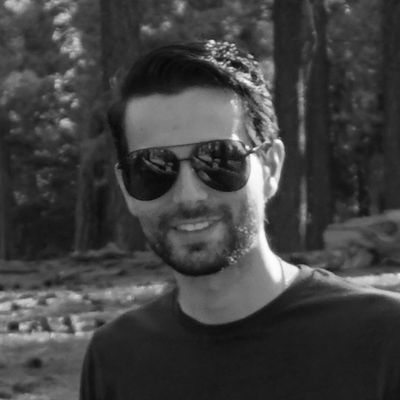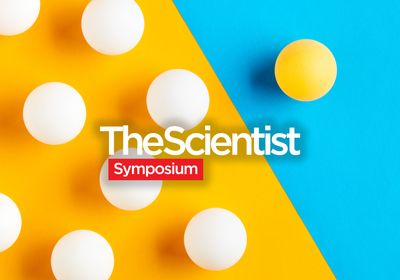ABOVE: © ISTOCK.COM, SILVERV
New research challenges the overarching assumption that genetic mutations occur randomly and are then either kept or discarded by natural selection. In the study, published January 14 in Genome Research, scientists found that the rate of a specific mutation with important health implications is nonrandom, occurring more or less often in different populations that have experienced specific environmental pressures over the course of generations.
University of Haifa evolutionary biologist Adi Livnat and his team analyzed tens to hundreds of millions of sperm cells from each of seven donors from Ghana and four from Europe, comparing how often mutations occurred in regions of two hemoglobin subunit genes in each group. They found that the hemoglobin S (HbS) mutation of the hemoglobin subunit beta (HBB) gene, which is known to protect against malaria but causes sickle cell disease when two copies are present, occurred more often in samples from the African cohort than the European one, while mutations to the similar and nearby gene for the delta subunit, which isn’t protective against malaria, did not.
Because the study focused on sperm samples, which are equivalent to a single generation, natural selection and genetic drift had no influence on the prevalence of mutations, Livnat tells The Scientist. And given the medical importance of the mutation exhibiting increased occurrence in the African cohort, Livnat says the results “raise a fundamental challenge to the notion of random mutation."
University of California, Davis, genomics researcher J. Grey Monroe is among several researchers The Scientist spoke to who are skeptical that the results support that substantial a claim, as previous studies have found variable mutation rates across large regions of the genome, which Monroe and others maintain aren’t in conflict with a fundamentally random mutational process. Still, he says that the paper’s results are “quite interesting,” because they show “that differences in mutation rates can be occurring down to very fine resolution, that they can differ between populations, and that could help explain evolutionary processes like adaptation to disease.
Zooming in
Conventional wisdom suggests that mutations occur throughout the genome at a more or less random rate due to factors such as errors in the replication process or damage to genetic material from exposure to radiation, chemicals, or pathogens. However, Livnat says that he’s spent years probing the “fundamental nature of mutation” and asserts that this is not always the case. Instead, he tells The Scientist over email, some mutations “can demonstrate a long-term directional mutational response,” where the genome is able to respond to external information and change specific regions in a targeted way.
Our results raise a fundamental challenge to the notion of random mutation.
—Adi Livnat, University of Haifa
To look for evidence of this idea, Livnat and his team set out to calculate the de novo mutation rate for a six-base-pair region of HBB that includes the HbS mutation site and the identical region on the nearby hemoglobin delta (HBD) gene—a mere 7,000 base pairs away—according to the paper. That required departing from the methodology of other mutation rate studies and using techniques that allowed the team to target and detect de novo mutations in unprecedentedly small regions of the genome down to the scale of specific base positions.
The problem facing de novo mutation studies is that people typically only have “several dozen de novo mutations scattered throughout” the 6.4 billion bases that comprise their genome, Livnat explains. “So to get enough observations of any particular mutation of interest you would have to sequence a substantial fraction of the global human population,” which, he adds, “is entirely impractical.”
See “Screen of 250,000 Species Reveals Tweaks to Genetic Code”
To circumvent that problem, the team sequenced sperm samples from individuals instead, because a “sperm sample of 100 million cells would give you a representation of the half genomes of 100 million potential individuals in a single test tube,” Livnat says. First, they extracted DNA from the samples and barcoded it for the relevant mutation, then conducted both linear and PCR amplification. After controlling for false positives from the amplification process, the researchers found that de novo mutations in HBB occurred at a significantly higher rate among Ghanaian samples than among European samples, while the rate of mutations in HBD was similar between the two groups. Livnat says that the finding strongly suggests de novo mutation rates can be influenced on the scale of single genes and by environmental factors—in this case, the risk of contracting malaria.
If the method is robust (time will tell), it is a very helpful addition to the arsenal to attack the problem of microscale mutation rate variation.
—Laurence Hurst, University of Bath
“I do not think it is a coincidence that the HbS mutation, which provides protection against malaria, originates de novo more frequently in sub-Saharan Africans than in Europeans,” Livnat says. “I also do not think it is a coincidence that it originates more frequently in the gene where it provides this protection compared to the nearly identical nearby delta globin gene, where precisely the same mutation could happen but would not provide protection.”
Challenging the status quo
The study adds to years of research demonstrating that mutation rates are not random across the genome, but Livnat says this is the first paper to show that the mutation rate of a gene can adaptively respond to an environmental pressure, separate from any fluctuations in a mutation’s prevalence that occur via genetic drift or natural selection.
Many researchers maintain that previous studies on the topic aren’t incompatible with natural selection being the ultimate driver of long-term genomic changes. For instance, a previous study in Nature illustrating that genes essential for survival and reproduction in Arabidopsis thaliana have lower mutation rates caused a dispute over the semantics of randomness: yes, some argued, the study indicated that mutation rates differed throughout the genome, but they maintained that the mechanism to protect those genes most likely emerged randomly and were selected for, an idea known as modifier theory. As Monroe, lead author of the older study, told The Scientist at the time: “Evolution created mechanisms that changed how evolution works.” However, Livnat says the findings of the new study cannot be explained by modifier theory because the specific mutation in question is too small in size for any modifier mutation promoting it to be maintained in the genome over time.
New tools, uncertain results
Other researchers in the field tell The Scientist they aren’t entirely convinced by the study’s big-picture conclusions about the nature of evolution, though they were impressed by the technological advancement it represents.
“If the method is robust (time will tell), it is a very helpful addition to the arsenal to attack the problem of microscale mutation rate variation,” University of Bath evolutionary geneticist Laurence Hurst says over email. “As the authors say, this is problematic—from gold standard parent offspring sequencing in any given trio of mum, dad and child, we only usually recover 10s of mutation in the child so we need many such trios even to get a handle on broad scale patterns. An ability to selectively and accurately determine mutation rates in such a small zone—if robust—is valuable indeed.”
Monroe shares a similar sentiment, telling The Scientist that “the method they use is definitely exciting, as it allows ultra-deep sequencing of small regions to see precisely how often specific mutations are arising.”
However, Monroe also notes that the number of sperm cells containing HbS mutations may differ from the number of times the mutation actually arose, explaining that a single mutation event could lead to multiple sperm that carry the mutation if it occurred prior to the cell replication process. Livnat disagrees with this critique, explaining to The Scientist that his team conducted statistical tests that accounted for the phenomenon Monroe describes, which he calls clonal dependence, and that “[t]he HbS mutation rate overall also remains significantly higher than expected even while assuming the maximum amount of possible clonal dependence.”
Monroe says that it’s difficult to take the paper’s conclusions at face value until researchers come up with a clear explanation of the mechanism driving the difference in mutation rates. “Without a plausible mechanism it is hard to be convinced that it’s not just a coincidence that this gene mutates more in Africans, even if it would be advantageous,” Monroe says.
Hurst is similarly curious about the underlying mechanism driving the seemingly adaptive mutation rate, though he says “the basic observation is intriguing.” He also suggests that there’s a “strong possibility” that an ascertainment bias—the observation of a heightened mutation rate because the authors were seeking it out—is at play. Once again, Livnat counters, arguing that the findings can’t be explained by any sort of ascertainment bias because the team found that the HbS mutation rate was lower in samples from Europe, where the mutation “is not of adaptive significance.”
As for questions about the underlying mechanism, Livnat says those can be answered by subsequent research. He adds that he’s not surprised to face pushback or critique, as “[t]he idea that mutations are accidental has reigned supreme for over 100 years, and it will not be easily conceded that it does not explain the facts.”






